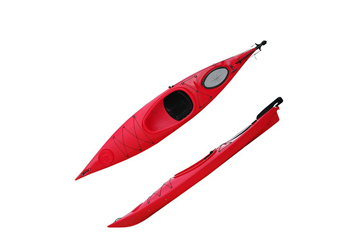Recreational And Touring Kayak: Which One Do You Need
Recreational And Touring Kayak: Which One Do You Need
Still undecided whether to buy a recreational kayak or a touring kayak? Don't worry, many kayaking enthusiasts also find themselves in the same dilemma, they are caught in the debate about the recreational or touring kayak. To help you in the selection process, we have listed the different factors you should consider when buying a kayak.
Touring kayaks have more storage space
Touring kayaks are several feet longer than recreational kayaks. This extra length gives you more space to store your gear or any other items, and you may need a long-term kayaking adventure or overnight kayaking camping trip. Most sightseeing kayaks have hatched and sealed bulkheads to keep the equipment dry and limit the amount of water that the kayak can withstand when it overturns.
Recreational kayaks are more stable
Stability refers to the ability of the kayak to resist tipping or overturning under normal water and wind conditions. Generally speaking, recreational kayaks are a few inches wider than touring kayaks, which makes them more stable than sightseeing kayaks. In other words, recreational kayaking is usually recommended for beginners, because touring kayaking may make them feel unstable.
Touring kayak is faster
For many kayaking enthusiasts, speed is an important consideration when choosing a kayak. Although speed mainly depends on the kayaker's paddling ability, style, and technique, the type and design of the kayak also play an important role. Between the two kayaks, other conditions are the same, the touring kayak is often faster on the water.
The reason is that this is so because of the narrow design silhouette of the touring kayak. As mentioned earlier, recreational kayaks are several inches wider than touring kayaks. This extra width means that recreational kayaks cannot cut through the water effectively, especially when facing rapids and high winds. In addition, the extra width will also cause more resistance, which has a negative impact on the efficiency and speed of the kayaker.
Touring kayak track better
Tracking refers to the ability of the kayak to travel in a straight line. If a kayak can move forward smoothly on the water after you stop paddling, then it is considered to have good tracking ability. Between recreational kayaks and touring kayaks, the latter is often observed to have better tracking ability due to its longer length. This is why kayaking tours are the first choice for kayaking enthusiasts planning long-term kayaking adventures. Because touring kayaks have better tracking capabilities, they can travel longer distances without so much effort by the oarsmen.
Recreational kayaks are easier to maneuver
Maneuverability refers to the ease with which the kayak can turn or maneuver. Recreational kayaks are a few feet shorter than touring kayaks, so they are easier to operate. The extra length of cruise ships greatly affects their handling. The longer the cruise, the more difficult it is to turn.
In order to make touring kayaks more maneuverable, manufacturers have designed kayaks with rudders (blade attached to the stern that can turn left and right), and the rudder is controlled by foot pedals located under the deck. Stepping on the left pedal will cause the kayak to turn left, and stepping on the right pedal will cause the kayak to turn right.
Touring kayak is more expensive
Between recreational kayaks and touring kayaks, the latter tends to be more expensive than the former. One of the reasons is the materials used to build the kayak. Recreational kayaks are made of polyethylene, which is cheaper than carbon fiber or other similar lightweight materials used to make touring kayaks. The features contained in the design of touring kayaks (such as hull, rudder, etc.) are another reason why it is more expensive than recreational kayaks.











